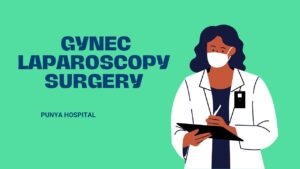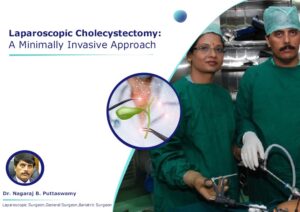Laparoscopic surgery also known as keyhole surgery was first performed around early 1901 and
today it has become one of the most frequently performed procedures. This procedure has
advanced tremendously over the last few decades as a result of several technical developments. In
the most simplified and concise terms, Laparoscopic surgery for women is a minimally invasive procedure that involves the
insertion of small surgical instruments and devices, along with a specialized tool known as a
laparoscope, through minor incisions inside the body for various surgeries.
This type of surgery is performed on different organs in the body, such as the gallbladder, liver,
appendix, pancreas, spleen, stomach, small and large intestines, pelvis, and reproductive organs.
Generally, non-invasive methods such as MRI, CT scan, etc. are used to diagnose the abnormalities,
and then, as per the requirement or demand of the situation, the doctor might use a laparoscope to
confirm the diagnosis for the affected area or organ. At times, it is also used to collect samples for
biopsy.
Laparoscopic surgery for women

In addition to treating various other conditions, laparoscopic surgery has proven to be extremely
effective in treating several gynecological problems. This has resulted in shorter, more accurate, and
less painful procedures. Since Laparoscopic surgery is a minimally invasive procedure, the recovery process is
comparatively easy and painless. Various laparoscopic-assisted procedures are used for treating
gynecological conditions such as:
Removal of ovarian cysts:
Ovarian cysts are becoming more common day by day due to various reasons. These are fluid-filled
sacs that develop on or in one or both ovaries. These cysts can be removed using a laparoscopic
procedure.
Endometriosis:
It often leads to infertility and mainly results in heavy and painful periods. Endometriosis implants,
which grow outside the uterus, can be identified and removed surgically using laparoscopic
procedures. In layman’s language, it can be said to be a heavy period treatment.
Hysterectomy:
Laparoscopic surgery is a surgical procedure to remove a woman’s uterus for some reasons, namely, uncontrollable
vaginal bleeding, chronic pelvic pain, and so on.
Tubal ligation:
It is a permanent means of contraception for women who no longer wish to conceive where the
fallopian tubes are cut, tied, or blocked.
Removal of ectopic pregnancy:
A condition where the fertilized egg implants outside the uterus, this procedure comes in handy in
providing a little less uncomfortable experience.
Preparation, procedure, and aftercare
The preparation and recovery for this surgery are pretty straightforward. For preparation, you have
to fast for at least 6–12 hours before your scheduled surgery. If you are on blood thinners, you will
be asked to stop taking them some days before the surgery, as this may increase your chances of
excessive bleeding during the surgery. Also, if you are a smoker, you will be advised to stop smoking
beforehand to avoid the risk of catching an infection. Generally, you will be discharged on the same
day, but it depends on the patient. The recovery time differs from patient to patient as per their
medical history and various other factors. But, due to the aftereffects of anesthesia, you will
probably feel wobbly or dazed, and for this reason, it is advised to have a family member or friend
with you.
The procedure for Laparoscopic surgery is pretty straightforward. The surgeon will make a small incision near
your belly button and insert a small tube to inflate your stomach or tummy area for a clear picture or
view. If this procedure is used to diagnose a condition, then it should take about an hour or so, but if
it is used to treat a condition, then it might take longer than that. Here, the surgeon will make a few
more such incisions, and with the help of a laparoscope, he will insert small surgical instruments and
perform the surgery. Once the surgery is finished, carbon dioxide is let out of your stomach, incisions
are closed with the help of stitches, and a dressing is applied. You’ll be under observation for a
couple of hours; once you regain consciousness and everything is fine, you’ll be discharged on the
same day itself.
You will be advised to keep your stitches clean, and you might notice symptoms such as bloating, a
sore throat, shoulder pain, pain near the incision site, etc., but this is nothing to worry about as
these will pass after some time. But if you feel more than that, you are advised to consult the doctor.
The recovery time is different for different patients as it depends on various factors such as whether
it was a minor or major surgery, pre-existing medical conditions, etc. The surgical team will give you
all the necessary details before and after the procedure, so don’t worry too much.
Note from Punya Hospital on Laparoscopic surgery for women
We at Punya believe that above everything else, it is you who has to have strong willpower and trust
in your doctor. Punya Hospital is the best gynecological laparoscopic surgery hospital in Bangalore.
Led by the exceptional Dr. Puyavathi C Nagaraj, who has worked for over 23 years to provide the
best possible service in this industry and has helped thousands of people. The moment you decide to
get surgery, half the battle is already won. All you need to do is stay strong and trust the process.
Punya promises to be there with you at every step of this process. Prepare yourself mentally and
never loose willpower and confidence in yourself.






